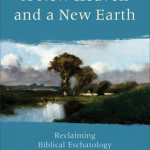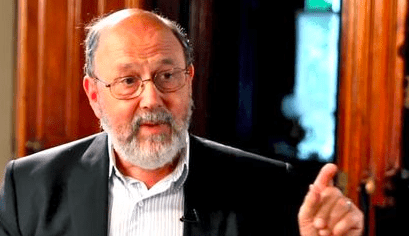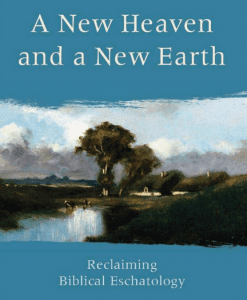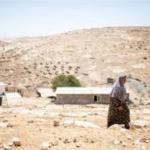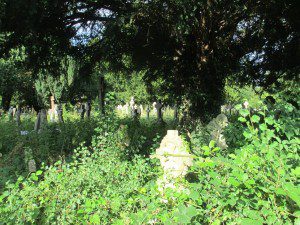 A couple of weeks ago we began a series of posts looking at John Polkinghorne’s book The God of Hope and the End of the World. After looking at insights into hope and the end of the world from the realm of science (see the previous post: The End of the World), Polkinghorne turns to human sciences and human hope for the future. How do humans hang onto hope in the face of certain death? We all know, on one level, that we will die eventually however much we ignore the fact. And yet we continue to hope and to cultivate hope. The picture to the right is a churchyard I enjoyed walking through while in Oxford last summer.
A couple of weeks ago we began a series of posts looking at John Polkinghorne’s book The God of Hope and the End of the World. After looking at insights into hope and the end of the world from the realm of science (see the previous post: The End of the World), Polkinghorne turns to human sciences and human hope for the future. How do humans hang onto hope in the face of certain death? We all know, on one level, that we will die eventually however much we ignore the fact. And yet we continue to hope and to cultivate hope. The picture to the right is a churchyard I enjoyed walking through while in Oxford last summer.
Hope is not optimism, based on predictions for the future, or wishful thinking unconstrained by probabilities. “True hope ‘thrives on a sense of what is inaugurated and possible, but always still coming into being.'” (p. 29) The future has begun, but is not yet – and this is the hope not seen that we trust in and strive for. Faith in the future is a deep human conviction. Polkinghorne reflects:
I believe that this intuition of hope is a significant and essential aspect of what it is to be human. It is not just a survival technique for whistling in the dark to keep our spirits up, but it is an encounter with the reality in which we live. (p. 31)
There are signals of transcendence that point us toward a reality deeper than surface appearances. Here he refers to Peter Berger’s book A Rumor of Angels with examples of transcendence. “Humans possess a significant intuition that in the end all shall be well.” Human experience points beyond the mere present. Art can provide a window through which we “glimpse a sight of an everlasting reality underlying the flux of the changing world.” And “… the hope of a reality beyond transience.” (p. 34)
It seems likely that ever since the Neanderthals began to bury their dead in a fetal position (significant of new birth) and coloured with red ochre (significant of blood and new life), there has been some intuition that death is not the last word in relation to human destiny. (p. 36)
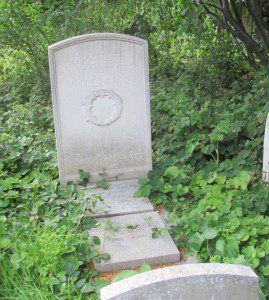 Cultural context. One important element of transcendence and this human intuition for hope is seen in human history and culture. The past is not merely a collection of facts and events. It is a continuum into the present and on into the future.
Cultural context. One important element of transcendence and this human intuition for hope is seen in human history and culture. The past is not merely a collection of facts and events. It is a continuum into the present and on into the future.
Hot memory … is the way in which the past remains still active in the present. It carries into our generation the traditions and insights that formed a community whole life is spread out over history, and of which we are but the most recent members. … [I]t offers dynamic participation in a still unfolding historical process, where the insights of the past are available as corrections to the limited perspectives of the present. (p. 42)
The textual canon of the Hebrew Bible and the New Testament through its compiling and interpretation “intertwines the thought of many generations.” In our culture the textual canon need not be limited to Scripture – great books and shared stories extend beyond this. However, the Scripture has played a lasting role in Western culture. A liturgical year (secular or sacred) and the regular weekly and yearly celebrations also connect us with the past.
We are more than animals. We are self-conscious, God-conscious, history-conscious, and future-conscious in a way that even chimpanzees and bonobos, our nearest animal cousins, are not.
We may share 99.5 percent of our DNA with chimpanzees, but that small difference is part of a very significant difference, just as the much smaller difference in DNA between myself and Mozart is part of a highly significant difference between an off-key whistler and a musical genius. The credibility of eschatological hope depends not only on belief in a faithful Creator but also on belief in the unique value of each human being. Right thinking eschatologically requires right thinking anthropologically. (p. 45)
Hope is a human characteristic and, Polkinghorne argues, a human intuition into a deeper reality that transcends the merely material investigated in science. Our intuition points us beyond a reductionist secular materialism. Deep down inside we know that there is something more than chemistry and physics and genes making us who we are.
Hope based on an inaugurated eschatology is the foundation of a moral view that supports and enables the costly demands of fidelity and duty. … Hope … deliver[s] us from the tyranny of the present, the feeling of need to grab as much as we can before all opportunity passes away for ever. We are enabled to live our lives not in the spirit of carpe diem, but sub specie aeternitatis (in light of eternity). (p. 49)
Hope is natural to humans, an integral part of who we are. Hope makes us human. It is in our very nature to have a hope for the future. Some may argue that this hope is an evolutionary fiction that enhanced the survival of our genes – a purely natural explanation. But Polkinghorne suggests that this hope springs from a genuine deeper reality. Our hope is a response to reality. We can have a justified hope for the future. All is not futile and meaningless.
None of this takes us directly to the God of hope or a Christian understanding of the end of the world and the age to come. For that we need to turn to the bible and to Christian theological insight. And this is where Polkinghorne turns in the next two sections of his book and where we will turn in the next post.
Do you agree that a human intuition for transcendence is an indication of a deeper reality beyond the merely natural?
Is it significant that a hope for the future goes back in our history – even back to Neanderthal society?
Is it the ability to recall the past and hope for the future that makes us truly human as a species?
How should we live? sub specie aeternitatis (in light of eternity) or carpe diem (seize the day)
If you wish to contact me directly you may do so at rjs4mail [at] att.net.
If interested you can subscribe to a full text feed of my posts at Musings on Science and Theology.






